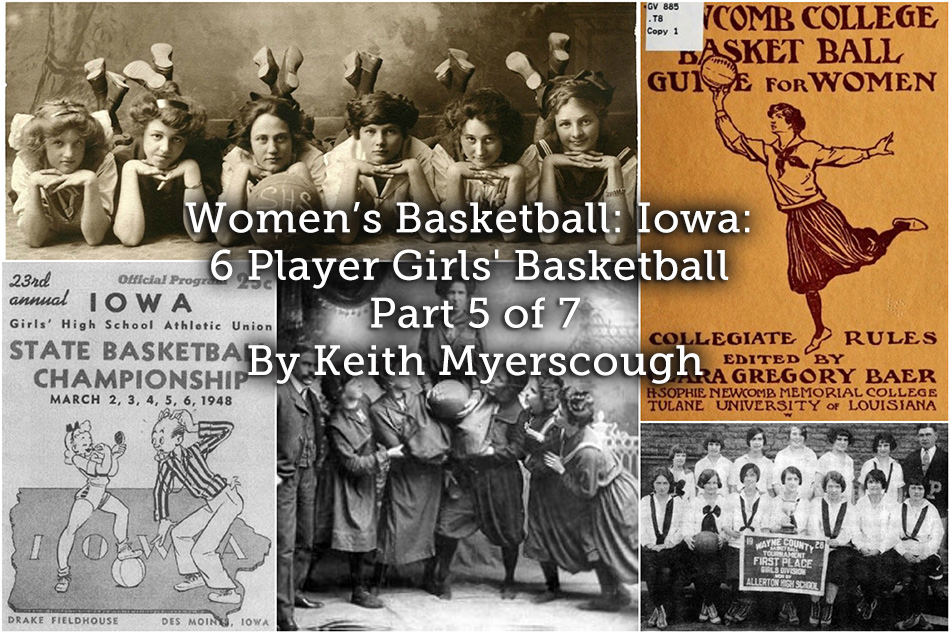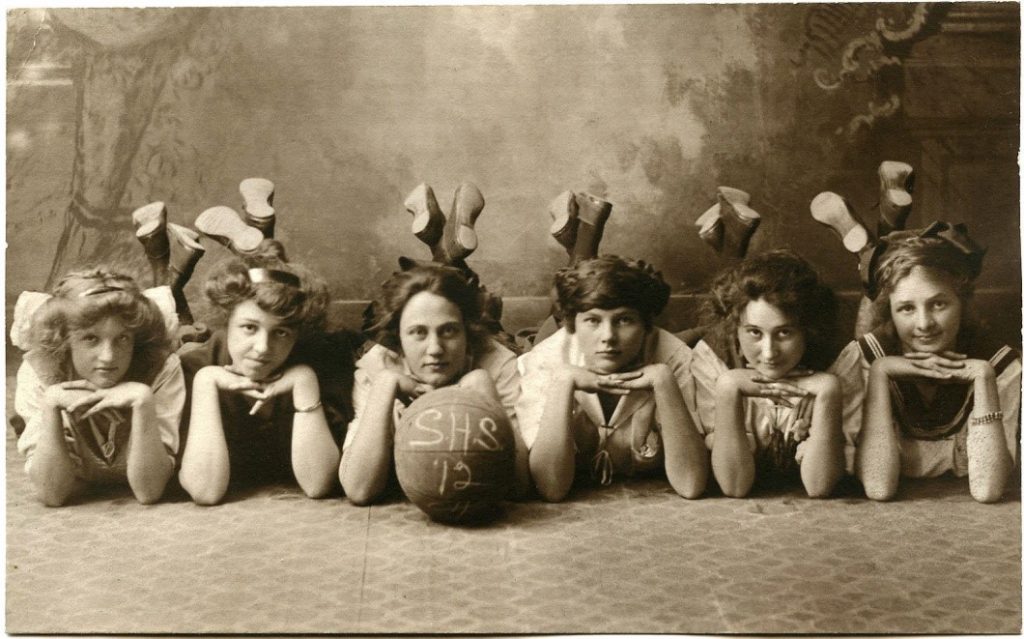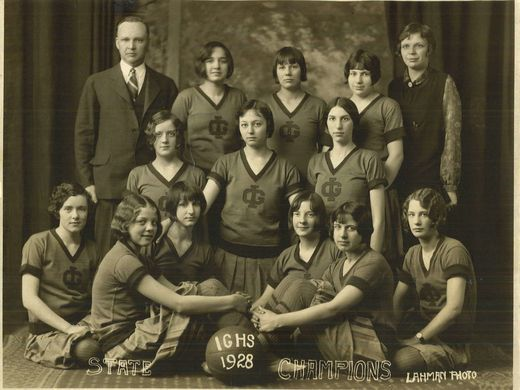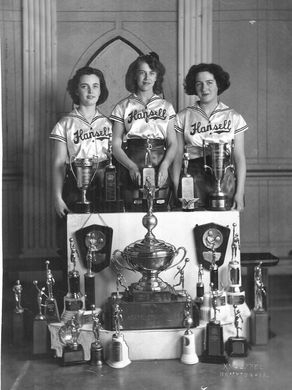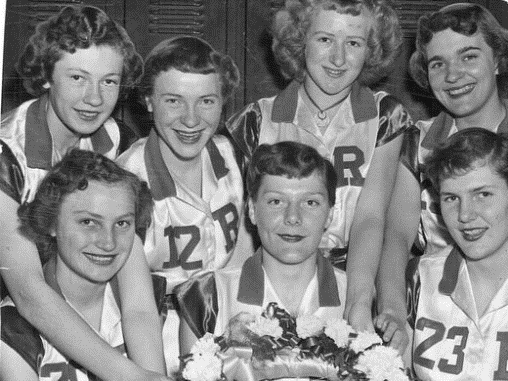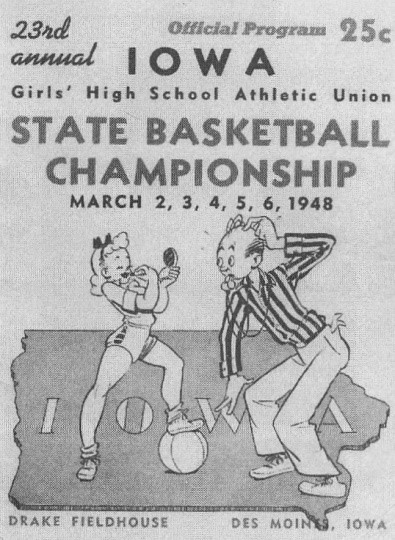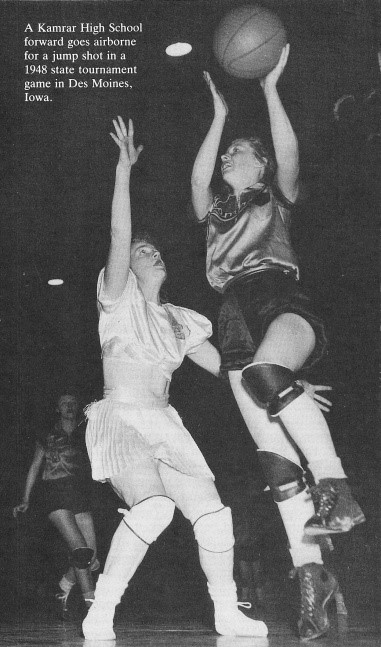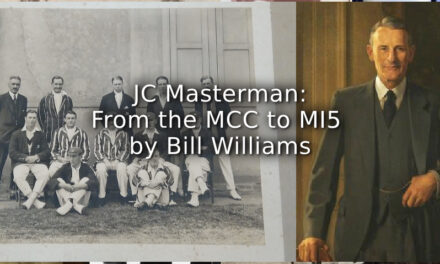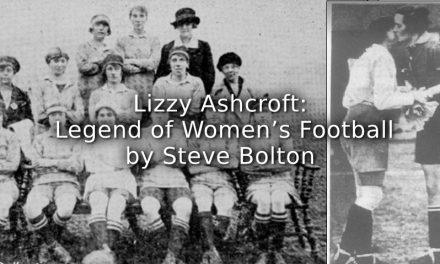The birth of women’s basketball in 1892 was a relatively straightforward event punctuated over the next decade by a series of changes to the rules of play that highlighted the extent to which culturally powerful regional influences moulded the women’s game. The adoption of ‘basket-ball’ in the State of Iowa in 1893 illustrates the complex interrelationship that existed between several spheres of influence in defining female participation in sports. James Naismith’s original game, with its 13 basic rules of play, provided female Iowans with the opportunity to adopt and then adapt basketball for their own ends. Influenced by a series of male-dominant cultural, social and medical ideologies, rural Iowa adopted a version of play best described as ‘6 player girls Basketball’.
The first female game of basketball in Iowa took place at the Dubuque YMCA in 1893 under the imported rules of ‘Basquette’ as devised by Clara Bare at Sophie Newcomb College in Louisiana. Basketball was an instant success with female players of all ages in Iowa’s schools, colleges and universities. The game’s success was based upon several revisions of the rules and regulations of play in order to meet local needs and the age range of the players. By 1900 there were at least three different versions of basketball being played; some establishments were playing to Naismith’s rules, whilst others had adopted Clara Baer’s “Basquette”, or Senda Berenson’s women’s rules, but many schools had adopted Iowa’s very own 6 player girls’ basketball.
The rules of 6 player basketball differ from Naismith’s game in that:
- There are six players on court for each team – 3 forwards and 3 guards.
- Only the forwards were allowed to shoot for basket – they had to stay in the frontcourt.
- The guards had to stay in the backcourt in order to defend their basket.
- Players could dribble the ball only twice before either passing or shooting.
These modified regulations were designed to limit the level of physical contact and the amount of energy expended by the girls whilst also encouraging the development of playing skills. The rules were simple enough for teachers and coaches to administer and the players could easily familiarise themselves with how to play the game. Whilst Berenson’s version of basketball, with a 3 division court, was taken up by schools in Iowa’s major cities, universities and colleges, it was the 6 player version, with 2 court divisions, that flourished in rural Iowa.
The longevity of 6 player girls’ basketball in Iowa was aided by five highly significant factors. Female participation rates were consistently high for a century prior to Iowa’s enactment of Title IX of the 1972 Education Act in 1993. Iowa had led the way for a number of other mid-west States (Minnesota, Nebraska, North & South Dakota, and Wisconsin), who played the 6 player version of basketball, making the game the highest participation sport for girls’ in the USA in 1972. The 6 player game had received a great deal of monetary support from player’s families, their schools, and local businesses. Thus, basketball’s life-blood was firmly entrenched in local communities across rural Iowa. It was the high attendance figures at games that ensured a steady income for schools, whilst the state championship tournament regularly attracted as many as 90,000 people to Des Moines for the five days of the finals. In 1953, Iowa had led the nation in attendance figures at girls’ high school sports. The local and state press also made a valuable contribution to the 6 player game by reporting on their local games and making heroes of girls who brought success to their team and town. The first TV coverage of the State Championships in 1951 attracted 260,000 viewers across the state. Paradoxically, the 6 player game became something of an anachronism in the eyes of many Americans, but it was the antiquated nature of the game that ironically preserved it in Iowa until 1993.
- 1928 Champions
- 1941 Champions
- 1968 Champions
Contained within the historiography of women’s’ basketball in Iowa is the story of how the rural population of the 29th US State lived their lives through two agrarian revolutions, two World Wars and the Great Depression. The response of ‘small town America’ to girls’ basketball reveals a way of life that contemporary reformers viewed as being antiquated in that it reinforced the social norms of a bygone age. The 1972 Education Act established a requirement for all federally funded schools to provide equal opportunities for both sexes. Title IX of the legislation placed an obligation on schools in Iowa to consider the status of girls’ basketball with regard to the spirit of the law. The 6 player game was found to be discriminatory in that it limited play based on outdated beliefs on gender roles perpetuated within farming communities who feared any loss of control over their own destinies; Title IX was an intrusion of ‘city values’ into rural America.
The consolidation of Iowa’s rural schools and farmsteads has had the effect of eroding the farming communities way of life, but one of the constants in their lives was girls’ basketball. The social capital it bestowed upon local farming communities throughout Iowa served to justify their way of life like no other aspect of their daily lives. In 1976, sports writer, Jim Enright, observed that ‘It is only in Iowa where the high school athlete is queen.’ The 6 player girls’ game had become an expression of rural femininity with teams entertaining their local community through the gender-specific rules of play. This was further expressed through the ‘sexing’ of player’s uniforms and the crowning of a basketball beauty queen at major tournaments. Whilst such ‘traditions’ are now viewed as being overtly sexist, rural Iowa celebrated both the beauty of their game and their home-town girls. Pamela Grundy and Susan Shackelford suggested in 2005 that for many females, ‘gentility was a luxury and female fortitude a given. Athletic competition seemed like fun, a fine place to channel youthful energy.’
- 1948 Tournament (1)
- 1948 Tournament (2)
Article © Keith Myerscough

